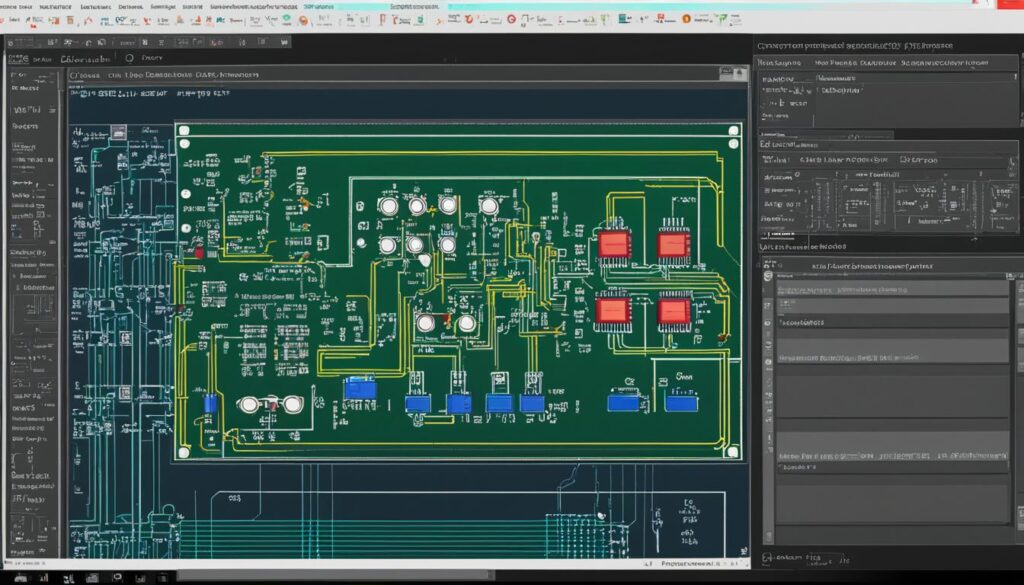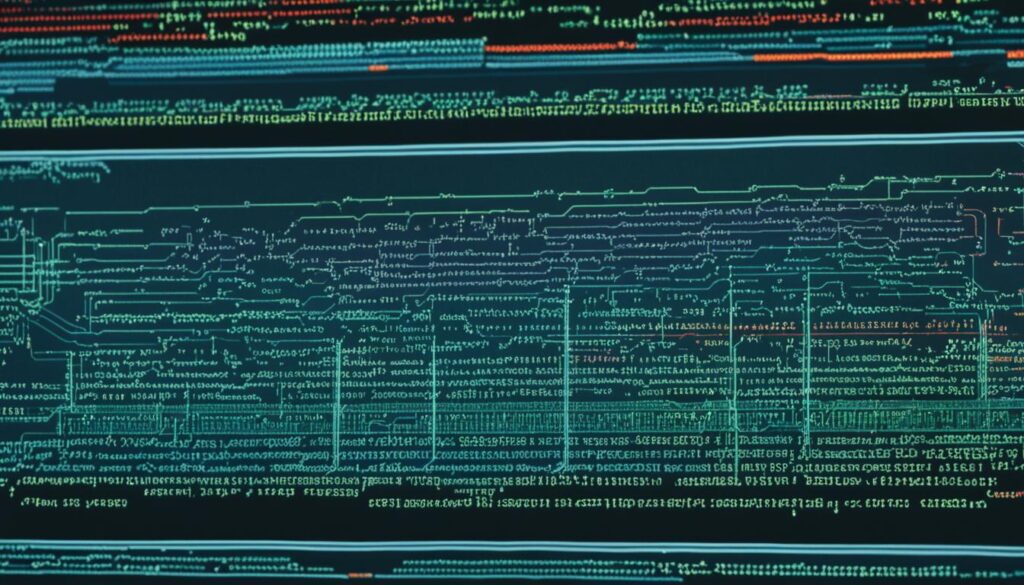Welcome to our informative guide on debugging and simulation with SystemVerilog. In this article, we will delve into the intricacies of these processes to enhance your hardware verification skills. Whether you are a professional hardware engineer or a student learning the ropes, understanding debugging and simulation in SystemVerilog is essential.
Debugging is a critical aspect of the hardware design process. It involves identifying and resolving issues or bugs that may arise during the development phase. By thoroughly examining the code and using various debugging techniques, we can ensure the functionality and robustness of the hardware design.
Simulation, on the other hand, allows us to simulate and test our designs before they are implemented in hardware. Through simulation, we can verify the correctness and performance of our designs, identify potential issues, and make necessary optimizations. It is an indispensable step in the hardware verification process.
Throughout this article, we will cover the fundamental concepts, techniques, and tools related to debugging and simulation in SystemVerilog. By gaining a comprehensive understanding of these topics, you will be equipped with the knowledge to tackle complex hardware verification challenges confidently.
So, let’s dive into the world of debugging and simulation in SystemVerilog and unlock the secrets to successful hardware verification.
Table of Contents
Understanding Debugging in SystemVerilog
In the world of hardware verification, debugging plays a crucial role in ensuring the functionality and reliability of designs. SystemVerilog, a widely-used hardware description and verification language, provides powerful debugging capabilities that aid in identifying and resolving issues during the development process.
When it comes to understanding debugging in SystemVerilog, it is essential to familiarize yourself with the various techniques, tools, and strategies available. These resources enable engineers to efficiently identify the root causes of errors and implement effective solutions to rectify them.
Debugging Techniques
SystemVerilog offers several debugging techniques that help engineers navigate through complex hardware designs. These techniques include:
- Signal Tracing: By monitoring signals within the design, engineers can track their behavior and identify any unexpected changes or anomalies.
- Trigger-based Debugging: This technique allows engineers to set triggers based on specified conditions. When a trigger condition is met, the simulation pauses, and engineers can examine the design’s state and perform necessary actions.
- Value Change Dump (VCD) Files: VCD files capture signal values at different simulation time steps, allowing engineers to visualize the evolution of signals and pinpoint issues.
- Assertion-based Verification: Assertions are powerful tools that help in verifying the correctness and functionality of a design. Engineers can define properties and constraints and use assertions to check if these conditions hold true during simulation.
Debugging Tools
To streamline the debugging process, SystemVerilog is equipped with a range of debugging tools that assist engineers in pinpointing errors more effectively. These tools include:
- Integrated Development Environments (IDEs): IDEs provide a comprehensive debugging environment where engineers can set breakpoints, inspect variables, and step through the code to analyze the behavior of their designs.
- Waveform Viewers: Waveform viewers allow engineers to visualize the behavior of signals and variables over time, enabling them to observe the flow of data and identify any unexpected patterns or inconsistencies.
- Code Coverage Analysis Tools: These tools help engineers assess the coverage of their testbenches and identify areas that need further testing. Code coverage metrics provide insights into the effectiveness of test cases in exercising different parts of the design.
By leveraging these debugging techniques and tools, engineers can gain a deeper understanding of their designs and enhance the efficiency of the debugging process. Through effective debugging, potential issues can be identified and eliminated, ensuring the reliability and functionality of hardware designs.
| Debugging Technique | Advantages |
|---|---|
| Signal Tracing | Allows engineers to monitor the behavior of signals in real-time |
| Trigger-based Debugging | Enables engineers to pause simulations and examine the state of the design |
| Value Change Dump (VCD) Files | Provides a visual representation of signal values over time |
| Assertion-based Verification | Allows engineers to define constraints and validate the correctness of designs |
Simulation Techniques in SystemVerilog
In this section, we will explore the simulation techniques employed in SystemVerilog to ensure the accuracy and reliability of your hardware designs. Simulations play a crucial role in the hardware verification process, enabling you to validate the functionality and performance of your designs before they are physically implemented.
SystemVerilog offers various simulation methodologies that cater to different stages of the design process. These techniques facilitate efficient testing and debugging, allowing you to identify and rectify potential issues early on.
Compile-Time Simulation
Compile-time simulation is a static analysis technique that identifies potential design errors during the compilation process. It helps catch syntax and semantic errors, uninitialized variables, and type mismatches. By detecting these issues early, you can save significant time and effort in the debugging phase.
Run-Time Simulation
Run-time simulation involves executing the simulation model using dynamic test stimuli. This technique enables you to simulate real-time scenarios, evaluate the functional correctness of your design, and verify the interaction between different modules. By observing the simulation results, you can identify and address any unexpected behavior or functional discrepancies in your design.
Post-Simulation Analysis
Post-simulation analysis involves analyzing the simulation results to gain insights into the performance, power consumption, and timing behavior of your design. Tools such as waveform viewers and coverage analyzers help you understand the design’s behavior, identify bottlenecks, optimize performance, and ensure compliance with specified requirements.
It’s important to note that simulation techniques in SystemVerilog should be tailored to the specific requirements and objectives of your hardware project. Choosing the right combination of simulation methodologies and tools is essential to achieve accurate, efficient, and comprehensive hardware verification.

| Simulation Technique | Advantages | Limitations |
|---|---|---|
| Compile-Time Simulation | – Early detection of syntax and semantic errors – Saves time in the debugging phase |
– Limited to static analysis – Does not capture dynamic behavior |
| Run-Time Simulation | – Evaluates real-time scenarios – Verifies interaction between modules |
– Time-consuming for complex designs – May not capture all corner cases |
| Post-Simulation Analysis | – Enables analysis of performance and power consumption – Optimizes design behavior |
– Requires additional analysis tools – Relies on accurate simulation results |
Advanced Debugging Methods
In this section, we will explore advanced debugging methods that are widely used in SystemVerilog. These techniques go beyond basic debugging strategies and provide engineers with powerful tools to efficiently identify and resolve complex issues in hardware designs.
1. Assertion-Based Verification
One of the key techniques in advanced debugging is assertion-based verification (ABV). ABV involves inserting assertions into the design code to check for specific conditions or properties during simulation. By applying assertions at critical points in the design, engineers can quickly identify violations and trace the source of the problem. ABV helps in validating assumptions, improving design reliability, and reducing debug time.
2. Dynamic Debugging
Dynamic debugging is another powerful technique that allows engineers to monitor and analyze the behavior of their hardware designs in real-time. With dynamic debugging tools, engineers can set breakpoints, watch variables, and step through the code execution. This approach provides valuable insights into the design’s internal state and helps identify complex root causes of issues by observing the design’s behavior under different conditions.
3. Intelligent Testbench Design
An intelligent testbench design is crucial for effective debugging in SystemVerilog. A well-designed testbench includes comprehensive test cases that exercise different aspects of the design. By creating intelligent testbenches with different stimuli and corner cases, engineers can effectively stimulate and monitor the design’s behavior, revealing any hidden bugs. Testbenches that mimic real-world scenarios and stress the design’s functionality are particularly useful in identifying and understanding intricate issues.
By combining these advanced debugging methods, engineers can gain deeper insights into their hardware designs, accelerate the debugging process, and improve overall design quality. These techniques play a vital role in ensuring the robustness and reliability of complex hardware systems.

Conclusion
In conclusion, this article has provided a comprehensive understanding of debugging and simulation in SystemVerilog. We have explored the intricacies of these processes and discussed essential aspects to enhance your hardware verification skills.
By applying the knowledge and techniques shared, you can effectively identify and resolve issues in your hardware designs, ensuring their robustness and reliability.
SystemVerilog debugging involves various techniques and tools, such as assertion-based verification and dynamic debugging, which enable efficient problem-solving. Additionally, simulation techniques like compile-time, run-time, and post-simulation play a vital role in verifying the accuracy of designs.
In summary, this article has equipped you with the necessary knowledge to tackle debugging and simulation challenges in your SystemVerilog projects. By incorporating these practices into your workflow, you can optimize your hardware verification processes and achieve successful outcomes.

